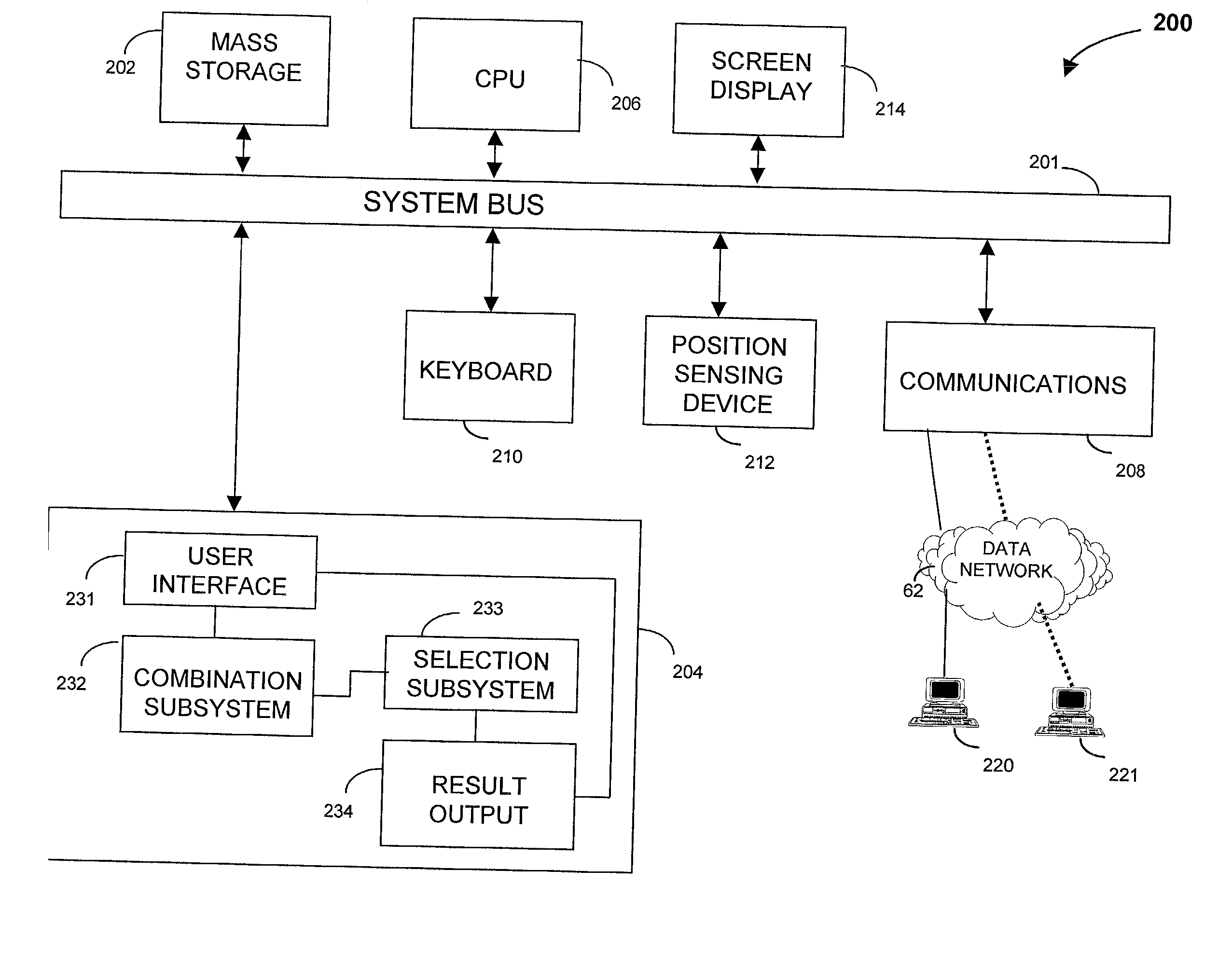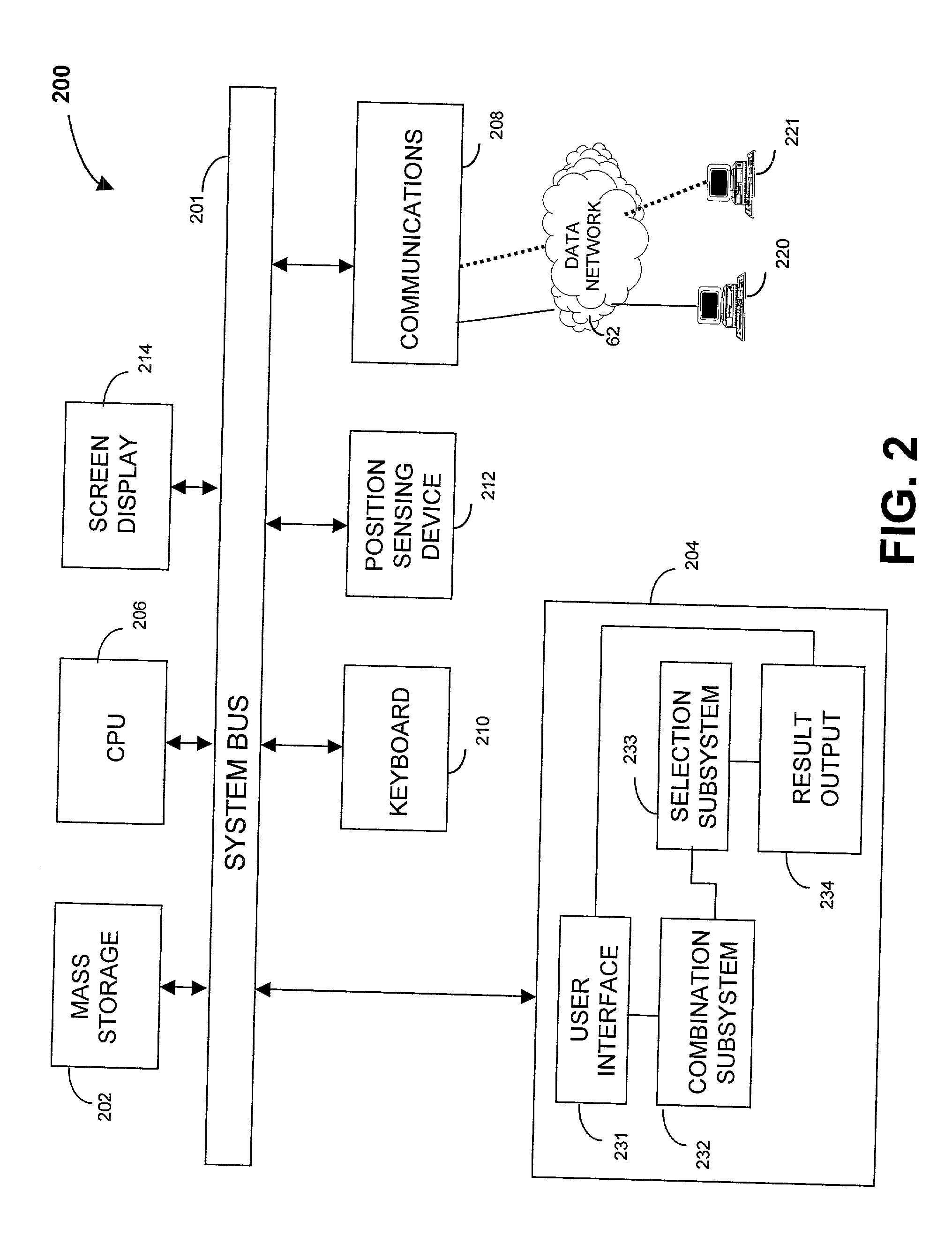Product brokering method and system
a product brokering and product technology, applied in the field of product brokering methods and systems, can solve the problems of not providing a satisfactory shopping experience, user often having to use the same words, and search may not be possibl
- Summary
- Abstract
- Description
- Claims
- Application Information
AI Technical Summary
Benefits of technology
Problems solved by technology
Method used
Image
Examples
Embodiment Construction
Mean A1 A2 A3 Deviation Deviation P1 9 10 10 1 + 7 + 0 = 8 8 / 3 P2 10 3 5 0 + 0 + 5 = 5 5 / 3 P3 7 7 10 3 + 4 + 0 = 7 7 / 3 P4 4 3 3 6 + 0 + 7 = 13 13 / 3 P5 6 9 3 4 + 6 + 7 = 17 17 / 3 P6 10 2 9 0 + 1 + 1 = 2 2 / 3 COMB. 10 3 10 -- -- P1-P2
[0057] Referring to TABLE 1, an example simplified for explanation, six products P1-P6 each have three attributes A1-A3, which each have a value range from 1-10. If the user selects products P1 and P2 as the closest choices, the attributes of products P1 and P2 are merged. In this example, the combination function will, for each attribute, randomly choose one of the products, and take the attribute for that product as the progeny attribute value. For the first attribute A1, product P2 is randomly chosen, and so the progeny of the combination, shown in the table as COMB. P1+P2, has a value of 10 for attribute A1. For the second attribute A2, product P2 is randomly chosen, and so the progeny has a value of 3 for the second attribute A2. For the third attribut...
PUM
 Login to View More
Login to View More Abstract
Description
Claims
Application Information
 Login to View More
Login to View More - R&D
- Intellectual Property
- Life Sciences
- Materials
- Tech Scout
- Unparalleled Data Quality
- Higher Quality Content
- 60% Fewer Hallucinations
Browse by: Latest US Patents, China's latest patents, Technical Efficacy Thesaurus, Application Domain, Technology Topic, Popular Technical Reports.
© 2025 PatSnap. All rights reserved.Legal|Privacy policy|Modern Slavery Act Transparency Statement|Sitemap|About US| Contact US: help@patsnap.com



